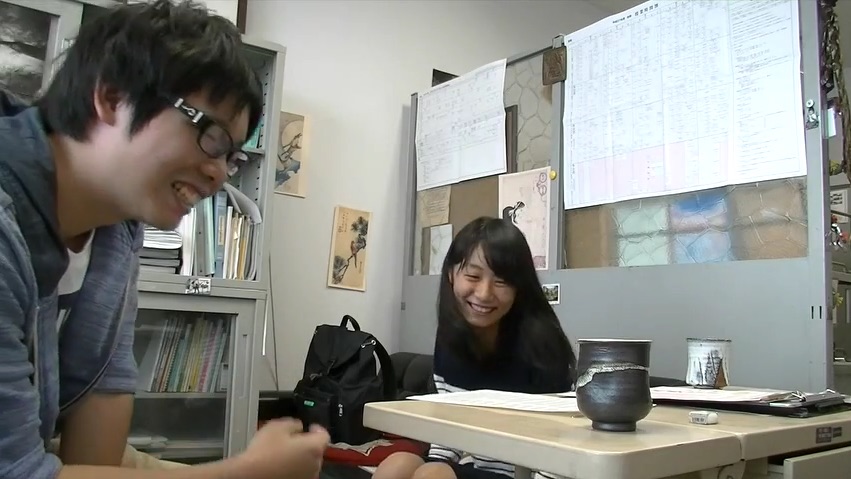
Conversations
Recorded Sessions and supporting dataConversation Archives
Browse through particular sessions (Basic or advanced). More sessions will be done with advanced students in 2017 and 2018 to see how proficiency impacts fluency. Each conversation is accompanied by a quick summary of students’ performance.
Corpora
The corpora provides the transcripts for all of the recorded conversations. You can download versions with or without their accompanying statistical analyses.
Conversation Topics
Here you can download the complete list of topics that students were provided for their conversation sessions. The Equivalency Table below shows how we selected students according to their test scores.
Test Type Equivalency Table
Basic
Advanced

Natsumi and Harumi
This conversation between Harumi and Natsumi shows a relatively average speaking rate for Natsumi (90.5) and a low one for Harumi (65.7). This is one of the more unbalanced intragender interactions in the corpus, with Natsumi having almost three times the number of words than Harumi. While acoustic dysfluency is relatively low at 18.9 seconds of silence or 3.2%, and only 5.6 cross-talk pausing, and with lexical dysfluency also being low, there is an illusion of fluency, but the low speaking rate does take a toll, as does the issues in syntactic dysfluency, with a lot of retracing on the part of Natsumi, 17 occurrences, and repetition, 42, occurrences. Harumi also had a high rate in this regard, 27. As for MLRs Harumi only had 4.4 compared to Natsumi’s 10.7. Meaningless syllables were also very high for both speakers, which makes this interaction, while animated, difficult to listen to.

Shohei and Megumi
This gendered discussion is interesting insofar that both participants really seemed to enjoy talking, so the percentage of silence is low, around 3.5%. Cross-talk pausing is not evident. There was a high rate of speaking rate for Shohei 122.7 as compared to Megumi’s, which was somewhat low 58.9. One issue that is apparent from the transcript is the very high level of minimal responses, so longer replies could help to improve the overall fluency of both participants.

Yuki and Nozomi
This discussion is marked by a rather high level of cross-talk pausing 28.6, and a high level of silence 120.8 seconds / 19.1% which is too high. Minimal responses are evident with both participants. Yuki did, however, when he did speak, have a high speaking rate (155.3) as compared to Nozomi’s 55.5, but this speaking rate has relatively little meaning due to the frequency of the minimal responses. Again as seen in other discussions, Yuki dominated the interaction with 482 words compared to Nozomi’s 149

Nozomi and Nanami
This discussion is notable insofar that there is an extremely high level of silence, particularly with cross-talk pausing, 125.3 seconds, and overall there was a 184.6 seconds or 29.9%. This reflects that the two women were somewhat ill-at-ease in finding common ground, though, again, this may not be apparent from just watching the video. Minimal responses are extremely common throughout this discussion, and MLRs are very short as well, 5.7 for Nanami and 5.6 for Nozomi. The number of words is on the low-side, around 253 and 223.
What are your suggestions?
If you are interested in working together, send us an inquiry and we will get back to you as soon as we can!



